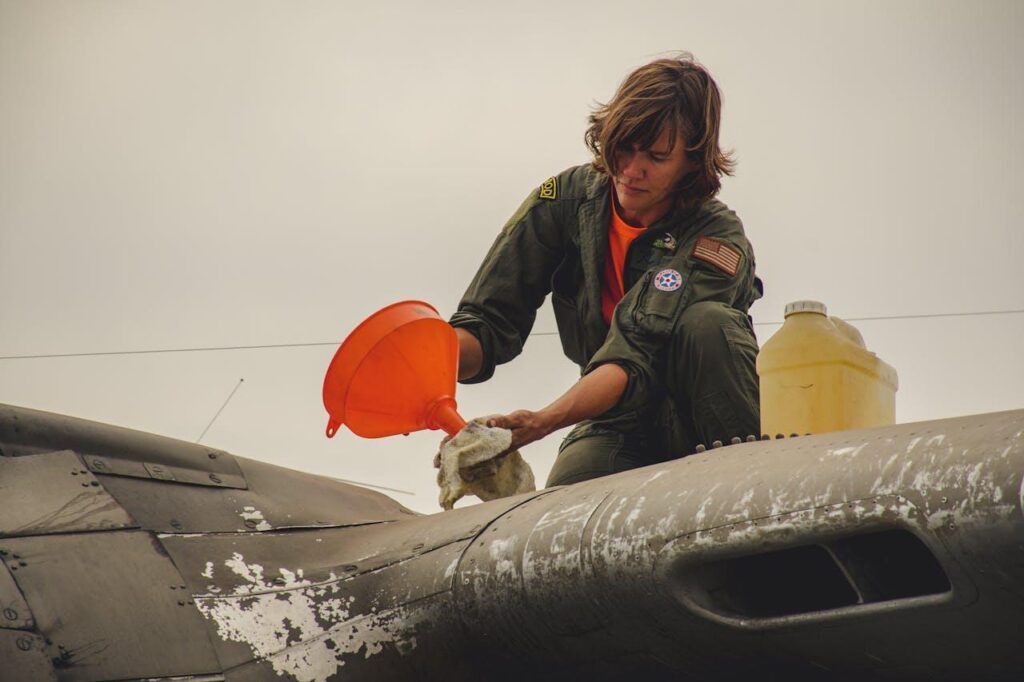Have you ever given the measures necessary to guarantee your safety before boarding an aircraft any thought? Join us as we explore the world of airplane maintenance behind the scenes, where experts toil ceaselessly to keep you safe while flying. Every part of aircraft maintenance, from the tiniest screw to the most intricate system, is focused on ensuring your safety. This article examines the precautions taken to make sure you have a safe and dependable flight experience every time.
Comprehending Aircraft Maintenance
Many jobs are involved in aircraft maintenance to ensure the safe and effective operation of aircraft. Maintaining aircraft in optimal condition requires routine inspections, maintenance, and repairs. Through these actions, the safety of both passengers and crew members is maintained, and mechanical faults during flight are prevented. The complexity of maintenance operations varies, ranging from comprehensive overhauls carried out over extended ground periods to regular inspections carried out prior to each flight. To maintain aircraft safety standards, regulatory authorities provide maintenance rules and timetables. Appropriate maintenance contributes to overall aviation safety by prolonging the lifespan and improving aircraft reliability.
Types of Maintenance for Aircraft
Aircraft maintenance comes in a variety of forms, each with a distinct function. Daily inspections and little repairs are part of line maintenance, which makes sure the aircraft are safe for every flight. Base maintenance, which entails more extensive inspections and repairs, takes place over extended ground periods. The most involved kind of maintenance, heavy maintenance, necessitates taking aircraft out of service for significant structural repairs and overhauls. These maintenance categories contribute to keeping aircraft in optimal condition. In order to ensure long-term reliability, base and heavy maintenance handle more serious problems, whereas line maintenance keeps aircraft airworthy for immediate usage.
How Intervals and Inspections Operate
In order to keep aircraft safe and dependable, inspections and intervals are crucial components of aircraft maintenance. Planned inspections take place at predetermined intervals, frequently in accordance with calendar time and flight hours, to look for problems and carry out required repairs. Unplanned inspections take place in reaction to unforeseen issues found during operations or that pilots or crew members report. These inspections are essential for quickly detecting and resolving any problems that can jeopardize safety. Aircraft airworthiness is maintained for all flights when carriers adhere to set inspection schedules and procedures.
Who Takes Care of the Maintenance?
Licensed Aircraft Maintenance Engineers (LAMEs) are highly skilled professionals approved by regulatory bodies to carry out a range of maintenance duties, such as troubleshooting, repairs, and inspections. To keep airplanes in top condition and guarantee the safety of both passengers and crew, they follow stringent criteria. They are supported in their work by maintenance technicians vital team members who help with activities under supervision and lend their knowledge and commitment to the entire maintenance process.
What Tools Are Used
Many specialized tools and equipment are used in aviation maintenance to perform inspections and repairs. The term maintenance tooling refers to a broad category of tools and equipment needed for many operations, including diagnosing, monitoring pressure, and tightening bolts. These tools include torque wrenches, pressure gauges, multimeters, and a range of ground support equipment, including hydraulic jacks and borescopes. Each of these tools is carefully selected to play a specialized role in ensuring the proper operation of aviation systems. These test instruments are used to evaluate the functionality and consistency of different parts, which helps identify any possible problems.
Conclusion
For the purpose of ensuring that aircraft are airworthy and ready for flight, aviation professionals adhere to specific maintenance schedules and procedures. To maintain the highest levels of safety, every task—from minor repairs to big inspections—is carried out with accuracy and skill. Recall that the committed people who oversee airplane maintenance put in countless hours to guarantee the security of both crew and passengers. Consequently, the next time you board an airplane, you will feel safe and secure knowing that meticulous maintenance protocols have been adhered to to ensure your safety in the air.



